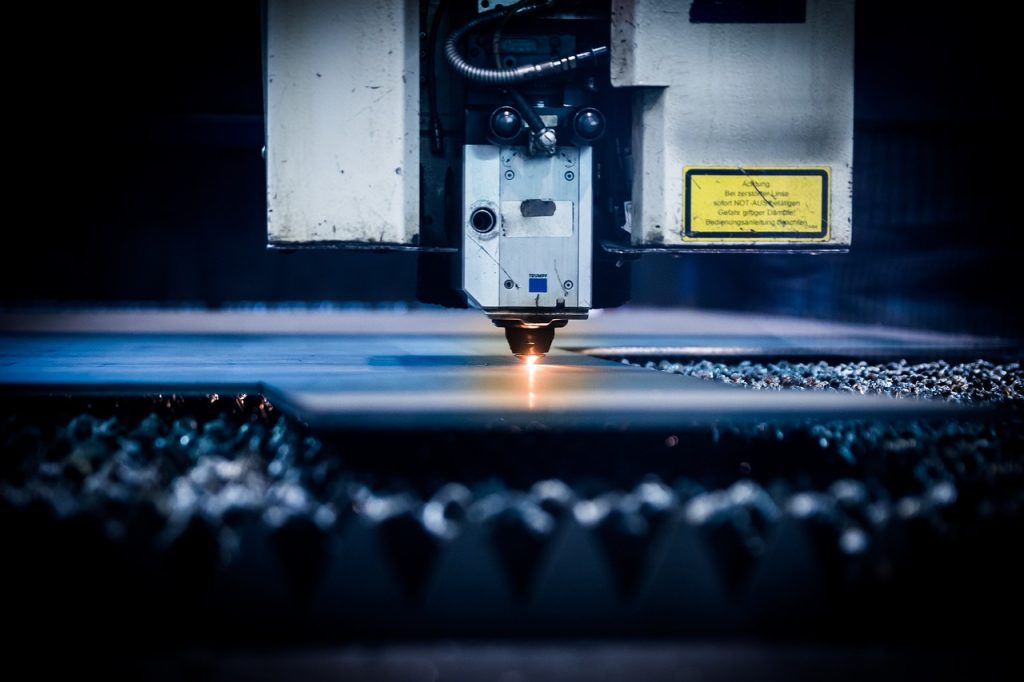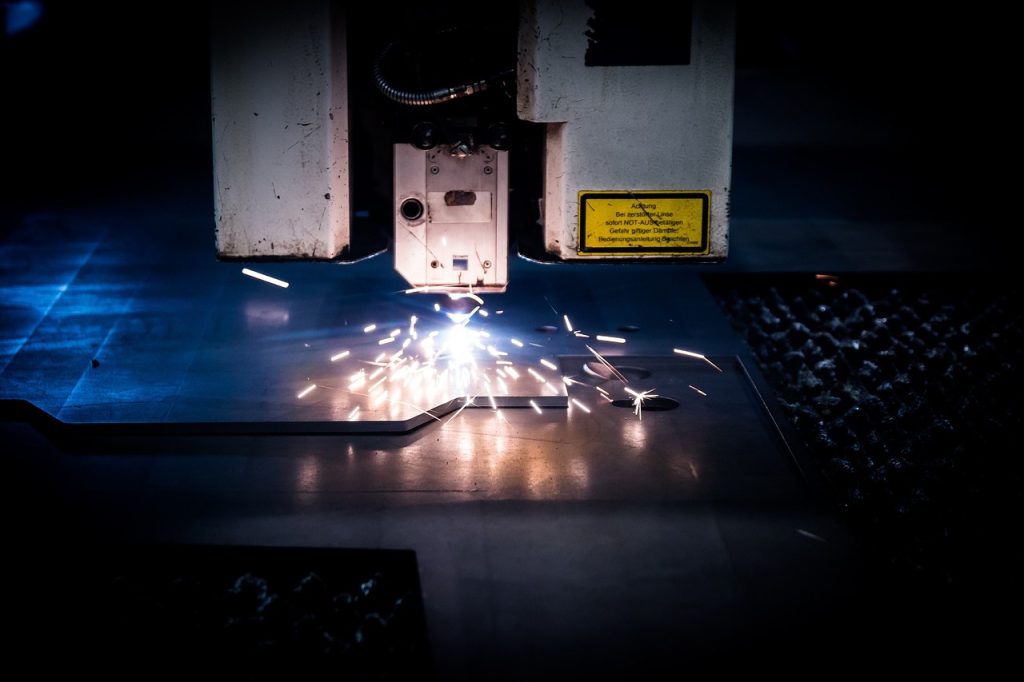Isn’t it exciting to think about the possibilities when venturing into a new business area, especially one as versatile and creative as laser cutting? If you are considering starting a laser cutting small business, you’re in for an exciting journey. Laser cutters have opened up a world of opportunities for creative entrepreneurs like you, providing the means to produce unique, professional-grade items right from your home. From custom signs to personalised gifts, the potential for creating high-quality products is vast.
This guide is designed to help you navigate the initial steps of starting your laser cutting business. From understanding how to select the right materials and design tips to figuring out pricing strategies and choosing the proper equipment, we’ll cover all the essentials to put you on the path to success.
Why Choose Laser Cutting for Your Small Business?
Laser cutting is not just a tool; it’s a gateway to unparalleled creativity and precision. But what makes laser cutting so special for budding entrepreneurs like yourself? For starters, it covers a wide variety of products, catering to different interests and market needs. Whether your passion lies in crafting bespoke jewellery, intricate home décor, or tailored gifts, laser cutting provides the versatility to bring your ideas to life with impeccable detail and precision.
Benefits of Laser Cutting
Laser cutting technology is a marvel for precision and customization. This precision allows you to cut intricate designs with ease, which might have been impossible with traditional methods. Furthermore, laser cutting is an excellent option for producing small batches, allowing you to test the market with minimal investment.
Table: Advantages of Laser Cutting
| Benefit | Description |
|---|---|
| Precision | Achieve detailed and complex designs easily |
| Versatility | Suitable for various materials including wood, acrylic, metal, and fabric |
| Customization | Easily tailor products to meet specific customer demands |
| Minimal Waste | High accuracy reduces material wastage, making it an environmentally friendly option |
| Scalability | Ideal for both small-scale projects and eventually scaling up production as demand grows |
Potential Challenges
While laser cutting offers numerous benefits, it’s essential to be aware of the potential challenges that could arise. Understanding these challenges beforehand can help you prepare and adapt effectively, ensuring steady business growth.
- Initial Equipment Cost: Quality laser cutters and supplementary tools can be expensive upfront, though they are an investment in quality and capability.
- Technical Skills Requirement: Operating a laser cutter and creating designs may require technical knowledge, which could necessitate time for learning or hiring skilled individuals.
- Regulatory Compliance: There could be specifics regarding zoning, safety regulations, and emissions you must comply with depending on your location.
Choosing the Right Laser Cutting Machine
Selecting the right laser cutting machine is crucial to your success. Your choice should reflect your specific business needs, balancing cost, capabilities, and future growth potential. Here’s what you need to consider:
Types of Laser Cutters
There are various types of laser cutters, each with distinct features and suitable applications. The most common types are CO2 lasers, fiber lasers, and diode lasers.
CO2 Lasers
These are widely used for cutting, engraving, and boring in non-metal materials like wood, fabric, and acrylic. They are generally well-suited for hobbyists and small businesses focused on creative product making.
Fiber Lasers
Fiber lasers are typically used for metal cutting and are more suited to industrial applications. If your business plans to work primarily with metals, this could be the appropriate choice.
Diode Lasers
These are often the most affordable and are primarily used for smaller projects that require high precision engraving on softer materials.
Key Features to Consider
When choosing a laser cutter, focus on these essential features:
- Power: Determines cutting thickness and speed. Higher wattage is generally better for thicker materials.
- Work Area: Larger work areas permit cutting bigger pieces or handling multiple pieces at once, increasing efficiency.
- Functionality and Ease of Use: User-friendly interfaces and robust software support can dramatically reduce the learning curve.
Investment Costs
Assessing the budget for your laser cutter is crucial since it’s one of the most significant investments you’ll make. Compare different models and brands, considering both upfront costs and future maintenance expenses.
Tip: Consider starting with a lower-cost model, upgrading as your business grows.

This image is property of pixabay.com.
Selecting Materials for Laser Cutting
The choice of materials is vital to your product’s appeal, functionality, and cost-effectiveness. Laser cutting suits a myriad of materials, so understanding the options available can expand your creative capacity.
Common Materials
Each material offers unique properties that can add value to your products:
Wood
An excellent choice for creating warm, organic designs such as home décor and furniture accents.
- Pros: Aesthetic appeal, versatile
- Cons: Can catch fire easily if not monitored
Acrylic
Popular for creating vibrant, colorful products like signs and jewellery due to its clarity and variety of available colors.
- Pros: Durable, visually appealing
- Cons: Can become brittle, susceptible to scratches
Metal
Ideal for creating durable pieces like nameplates and industrial applications.
- Pros: High strength, long-lasting
- Cons: Generally requires more powerful lasers
Leather
Adds a luxurious feel to products such as wallets, bags, or patches.
- Pros: High-end appeal, flexible
- Cons: Requires careful handling during cutting
Creating Designs for Laser Cutting
Designing for laser cutting involves a mixture of creativity and technical know-how. It’s critical to produce designs that work aesthetically and logistically with your chosen materials and laser cutter capabilities.
Software Options
Choosing the right software for design can enhance your productivity and creative expression. Here are a few popular options:
- Adobe Illustrator: Perfect for vector graphics, a fundamental design element for laser cutting.
- CorelDRAW: Offers extensive design features and is popular in laser engraving and cutting industries.
- Inkscape: A free, open-source alternative that provides various design tools.
Tips for Effective Design
- Keep It Simple: Intricate designs are beautiful, but overly complex designs can take too much time to cut and can lead to errors.
- Mind the Dimensions: Always ensure your designs fit within your chosen materials and laser cutter’s work area.
- Use Vector Images: Vector images scale without losing quality, making them ideal for laser cutting.

This image is property of pixabay.com.
Pricing Strategy for Your Laser-Cut Products
Setting the right price for your products is essential to cover costs and make a profit, but it’s also crucial to remain competitive in the market.
Factors to Consider
- Material Costs: Consider the cost of materials and how it impacts your pricing strategy.
- Production Time: Account for the time spent on cutting and finishing products.
- Market Trends: Be aware of what similar products are selling for to ensure you’re priced competitively.
Pricing Models
Several pricing models can be used:
- Cost-Plus Pricing: Calculate the total cost of production and add a percentage mark-up to determine the selling price.
- Value-Based Pricing: Price based on the perceived value to the customer rather than just the cost of production.
Marketing Your Laser Cutting Business
Once you are ready to roll out your products, effective marketing is crucial to build visibility and attract customers.
Branding
Establishing a strong brand identity is key to differentiating yourself in the market. Your brand should be reflected across all communication and marketing channels.
Online Presence
An online presence is vital for reaching a broader audience. Consider the following avenues:
- Website: Acts as your digital storefront where customers can view your portfolios and place orders.
- Social Media: Platforms like Instagram and Pinterest are ideal for showcasing your work visually.
- Online Marketplaces: Websites like Etsy and Amazon Handmade provide a pre-established customer base and international reach.
Networking
Engage with other creative businesses, participate in craft fairs, or collaborate with local businesses to expand your network and reach new customers.

This image is property of pixabay.com.
Conclusion
Starting a laser cutting small business offers a fantastic opportunity to unleash your creativity while tapping into a profitable market. By choosing the right equipment, materials, and designs, and employing effective pricing and marketing strategies, you can create high-quality products that stand out. Remember, like any business venture, it’s about continuous learning and adapting to new trends and challenges.
As you embark on this journey, let your passion guide you, and don’t be afraid to experiment and innovate. Every cut you make is a step closer to turning your entrepreneurial dream into reality. Good luck as you set off to make your mark with your laser cutting business!

